Innovative approaches and the non-standard solutions of architects make it possible to take full advantage of the most effective features of steel structures: low cost, strength, reliability and an understated beauty.
Manhattan transportation hub
The style of the Spanish architect Santiago Calatrava is called ‘architectural bionics’. One of the architect's amazing creations is the futuristic World Trade Centre transport junction. The facility, with a total area of 800,000 m2, is the third largest transportation centre in New York City.
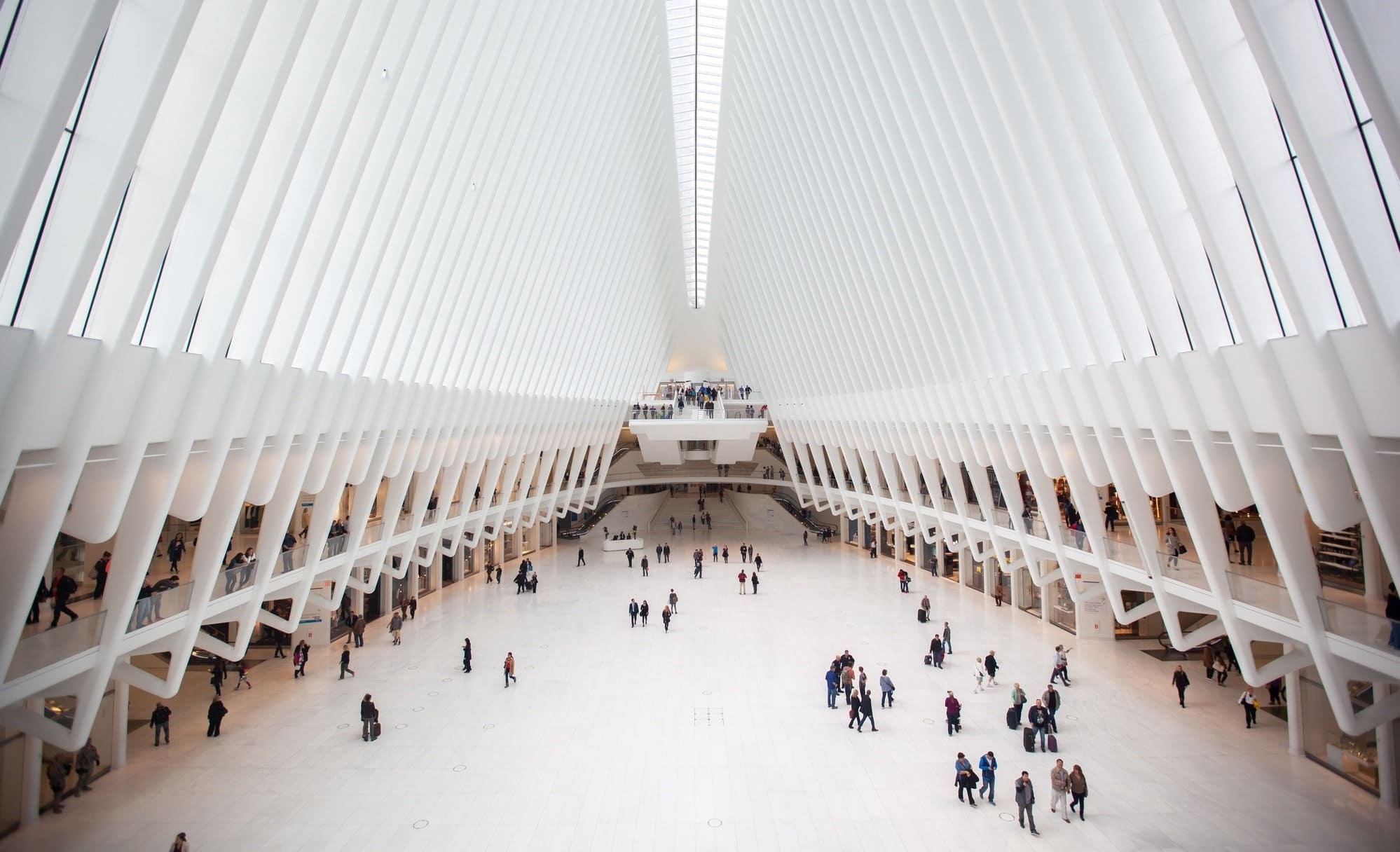
The central element of the transport hub is the majestic space of the Oculus, which covers an area of 78,000 m2. The hub hall attracts passengers arriving by subway (11 subway lines pass through the junction), by the PATH light rail, by the ferry terminal, as well as visitors to the National September 11 Memorial and Museum, the towers of the World Trade and World Financial Centres...
When creating the Oculus, 11,500 tonnes of steel were used. Its outline, according to the architect's concept is meant to symbolise a dove being released from a child's hands. The gently curved steel ribs of the structure form an elliptical dome. Beams of natural light stream through the openings in the curved steel elements and gently fall onto the snow-white surfaces of the Oculus, bringing a spiritual atmosphere to this giant ‘lobby’.
However, some critics did not appreciate Calatrava's ideas. Dissatisfaction was caused by the protracted project completion time and a doubling of the cost from the initial estimate (instead of US$2 billion, the building cost the city almost US$4 billion). Detractors likened the Oculus' dove design to both the Nike logo and a Thanksgiving turkey. (1.2)
Steel House in Texas

Robert Bruno, an American sculptor, architect and inventor and professor at the College of Architecture at Texas Tech University, began working with steel as a student. His first steel works were sculptures. The so-called Steel House is considered Bruno's primary work.
At the same time, the fanciful structure resembles an unidentified flying object, a retro car, an insect and a piano. It seems that the four-story house is struggling to maintain its balance, miraculously clinging to the edge of a canyon in Texas, USA. Bruno built it on his own for 35 years until his death in 2008, making it an architectural masterpiece that was never completed. The artist's plans to install an aquarium and a swimming pool, as well as to decorate the house with stucco mouldings, did not come true. Nevertheless, the Steel House has become one of the state's top tourist attractions.
Robert Bruno welded his three-story steel creation by hand. During its construction, about 150 tonnes of metal were used. A distinctive feature of the building is the bizarrely curved panoramic windows, some of which have inserts of beautifully coloured glass. (3.4)
Bird's Nest in Beijing
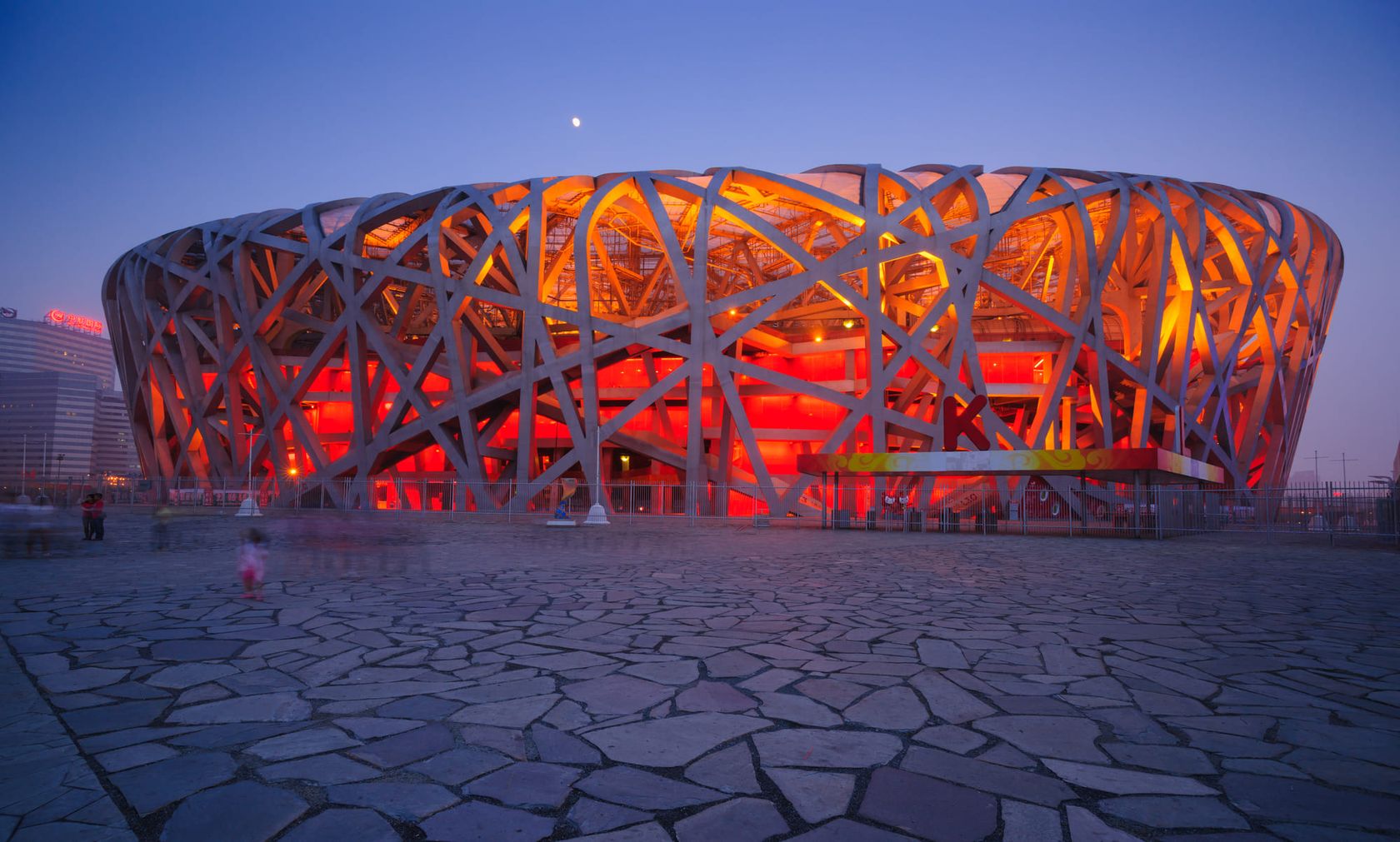
The national stadium, built in Beijing for the 29th Olympic Games, which China hosted in 2008, is called the Bird's Nest. However, they say that the architects of the Swiss firm that came up with the original project were inspired by the idea of a steel thread wrapped around a transparent ball. Today, the Bird's Nest is considered to be one of the largest steel structures in the world. The construction of the structure took 40,000 tonnes of steel. The design life of the stadium is at least 100 years.
The Bird's Nest consists of two enormous structural parts: a concrete sitting bowl and an outer steel shell located at a distance of 50 metres. Curiously, a retractable roof was originally planned, but the idea had to be abandoned due to a shortage of steel on the domestic market.
The construction of the grandiose structure lasted for five years. The cost amounted to more than US$420 million.. The stadium has an area of 254,000 m2 and can accommodate 91,000 visitors.
The concept of the Beijing National Stadium uses innovative ‘green’ ideas for natural ventilation and lighting, rainwater collection and recycling, as well as solar energy.(5.6)
Santiago Bahá'í Temple
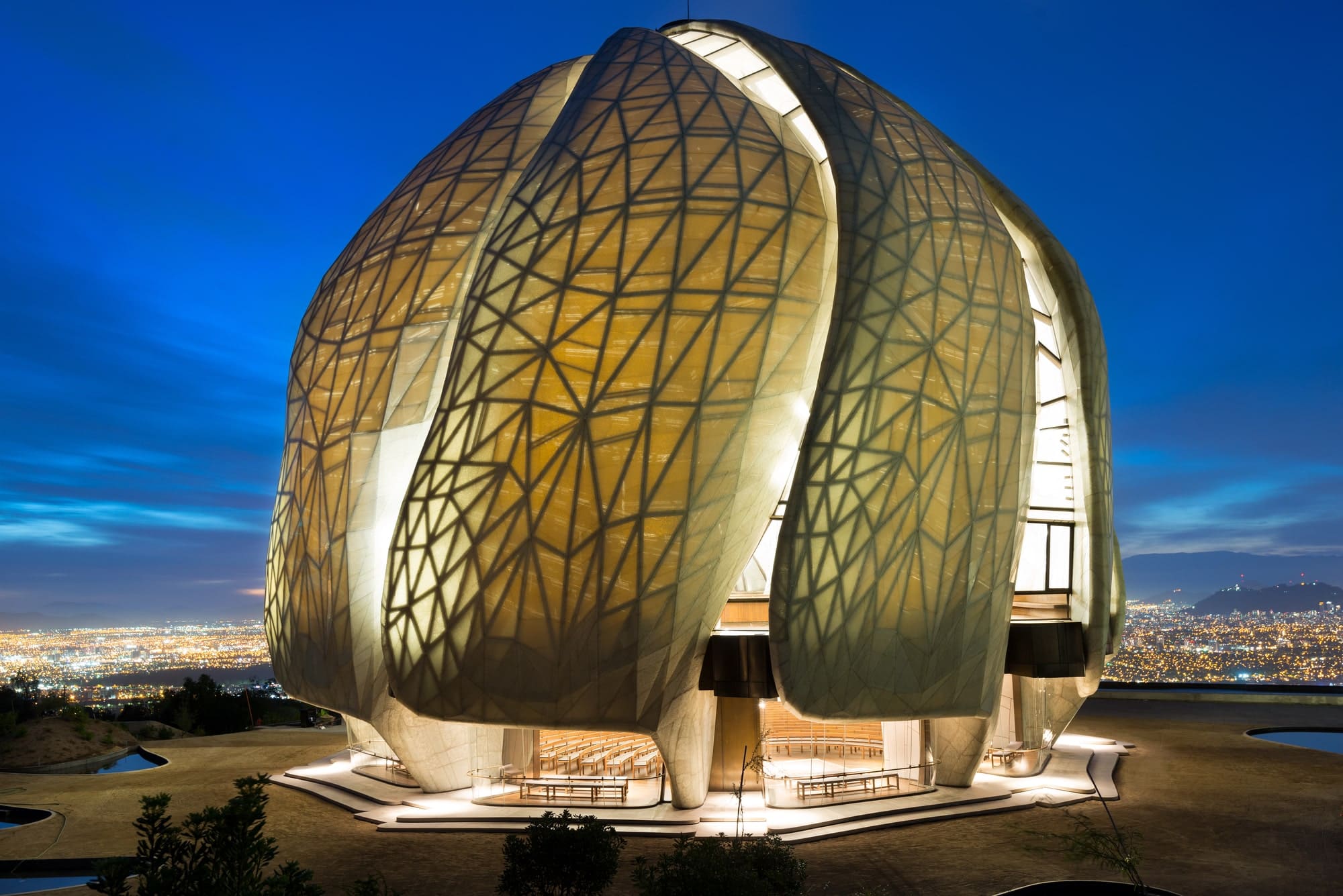
The onset of a ’new world order’ has preoccupied the minds of a part of humanity as it enters the second year of the pandemic. The adherents of the Bahá'í faith, which originated in Iran in the 19th century, and later spread through the Middle East, understand the new system of world government as the oneness of God, all religions, the equality of all people, men and women, the elimination of wealth and poverty, and other outstanding goals.
The architects of the Hariri Pontarini Architects firm, who have worked on the amazing Bahá'í Temple in Santiago for 14 years, managed to capture the sublime and, at the same time, rebellious sentiments of the teaching’s followers. In addition, they were given the task of designing a building that would be understandable and intimate to people of different faiths and cultures.
Being a place of pilgrimage for believers and tourists, the Santiago Temple is the last of eight places of worship built by the community. As conceived by the followers of the Bahá'í religion, the building embodies the desire for "innovative technical development and perfection of architectural forms". The building consists of nine ‘wings’ that form an inner circular space for praying to God. They are formed with several hundred steel elements and joints. The wings are clad in moulded glass panels with a composition that has been specially developed to achieve a special combination of absorption and reflection of light rays. As a result, during the day, it seems that the colour of the building shimmers, and in the evening the Temple emits a magical golden glow. (7.8)
National Museum of Qatar
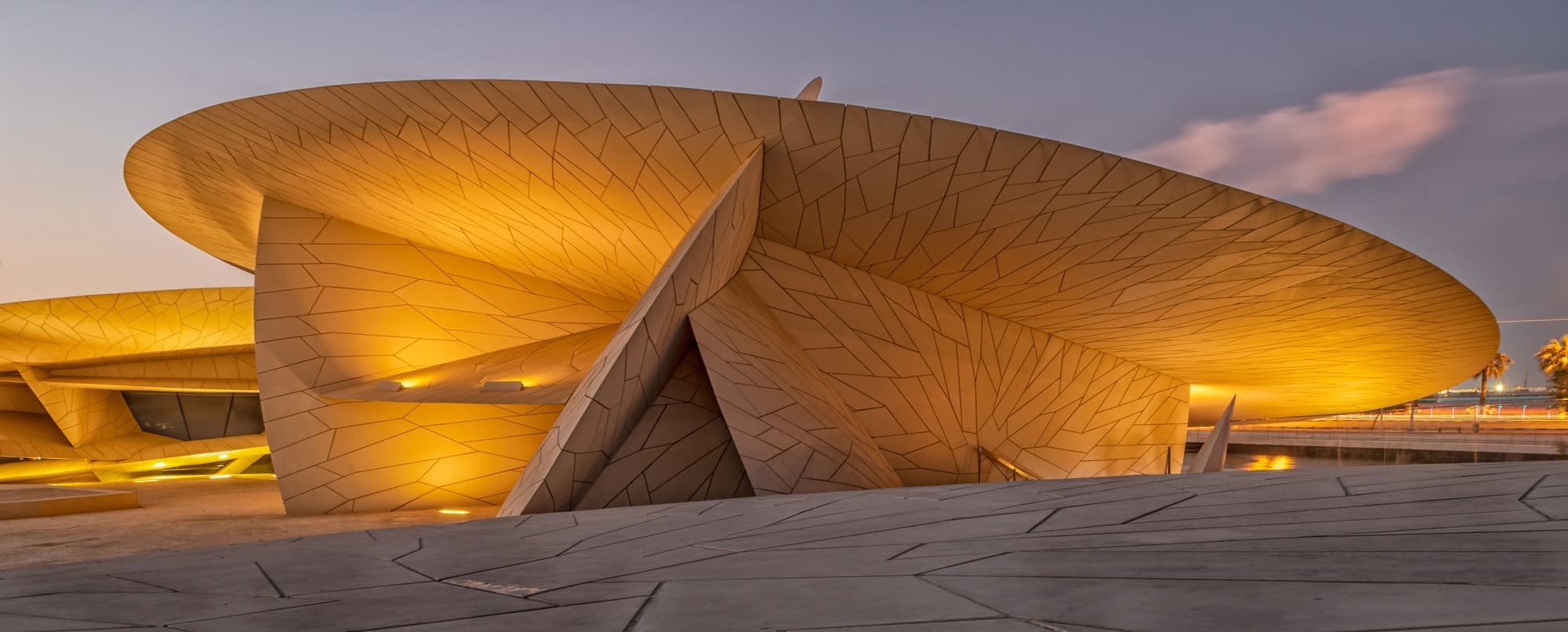
The futuristic building of the National Museum in Doha, the capital of Qatar, has become another symbol of the powerful injection of petrodollars into the infrastructure of the Persian Gulf countries. The structure was named ‘Desert Rose’ and was designed by the French Pritzker Prize laureate Jean Nouvel. The architect’s source of inspiration was the crystal of the same name formed from gypsum, barite and sand in arid natural conditions. In fact, the 52,000 m2 museum building resembles such a formation. The complex is a loop-shaped conglomeration of giant discs. Crystal discs are steel frames clad in UHPFRC (Ultra High Performance Fibre-Reinforced Concrete) panels. In addition to the symbolism and aesthetic pleasure, steel discs perform another important task: they reliably protect museum visitors from high environmental temperatures.
Opened in 2019, the museum has already become a place of pilgrimage for local residents and foreign tourists. They are attracted not only by the uniqueness of the steel structure, but also by the concept of the exhibition, in which the history of the State of Qatar is presented with the help of artifacts, light and sound installations and images in displays. (9,10,11)
Tower in Arles
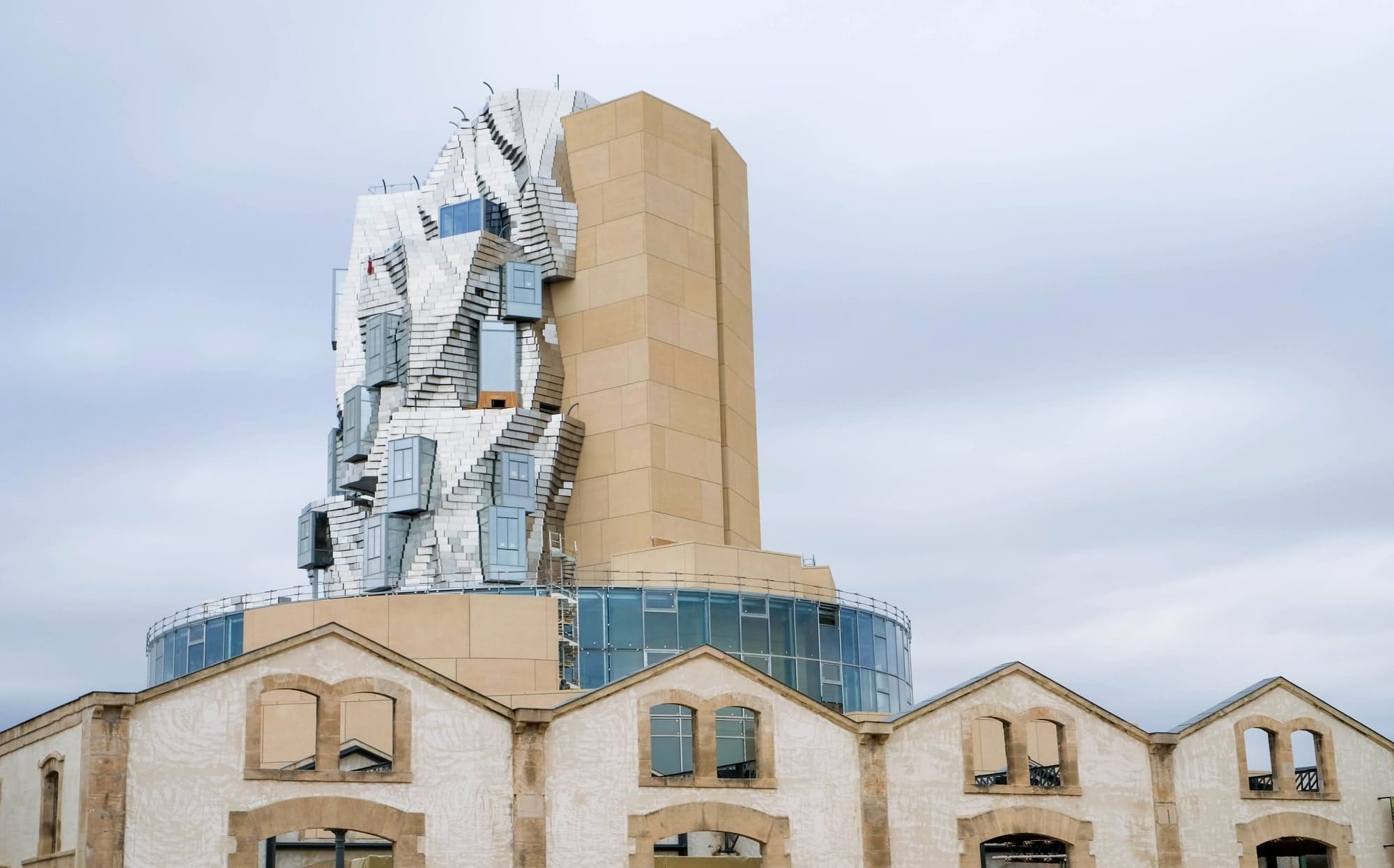
Over a period of eight years, the Luma Arles architectural and cultural project has been under way in the French city of Arles. It is promoted by Maja Hoffman, a Swiss entrepreneur, art patron, film producer and collector. Maja is passionate about supporting artists, photographers, filmmakers, animators and other people of the arts. The Luma Arles facilities are located in the vast area of 19th century railway workshops. These are six industrial buildings, the reconstruction of which is being carried out by renowned architects under the guidance of Hoffman. One of them is architect Frank Gehry's shimmering Tower. Upon completion of the renovation, the Tower will house research centres, art studios and training rooms. It is assumed that the 50-metre-high Gehry Tower will become the architectural centre of the complex. It will be a multifaceted crystal of irregular shape, miraculously emerging amid characteristic industrial buildings. The facade of the Tower, with an area of 5,000 m2, is a remarkable example of the use of stainless steel in architecture. It is made of 300 welded steel panels and 11,000 stainless steel sheets. At the base of the tower, there is a glass-lined cylinder, the lustre of which further enhances the visual impact of the reflections of the steel part of the structure. Investment in the construction of the Tower has totalled US$175 million. The Maja Hoffman Foundation raises funds from benefactors. (12.13)
Steel is a building material of amazing artistic expressiveness. With its help, modern architects are able to implement the most daring concepts. Using steel structures in architecture, architects create not only inexpensive and reliable structures, but also stunning works of art.
